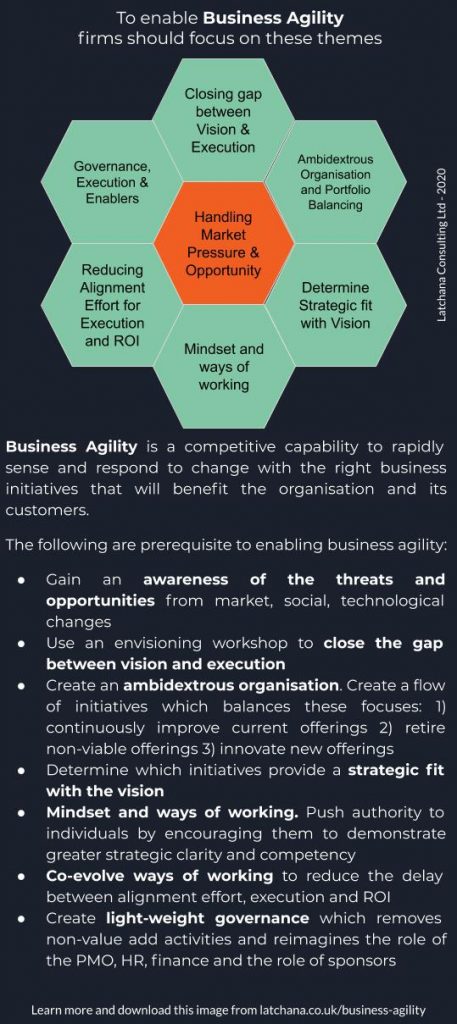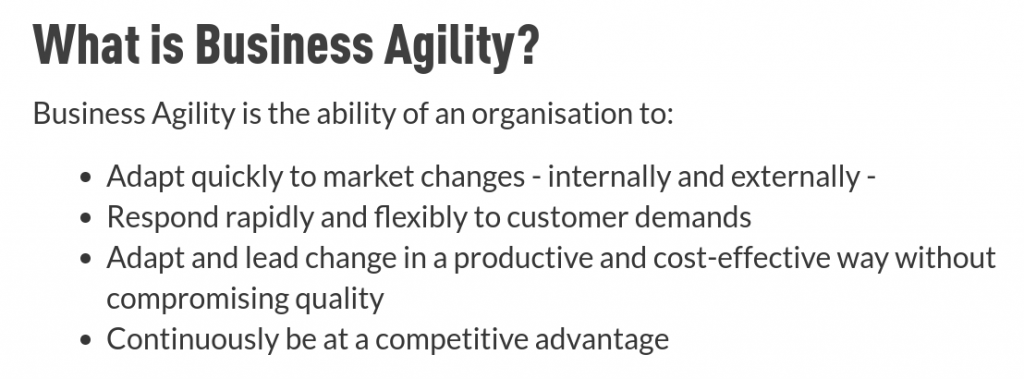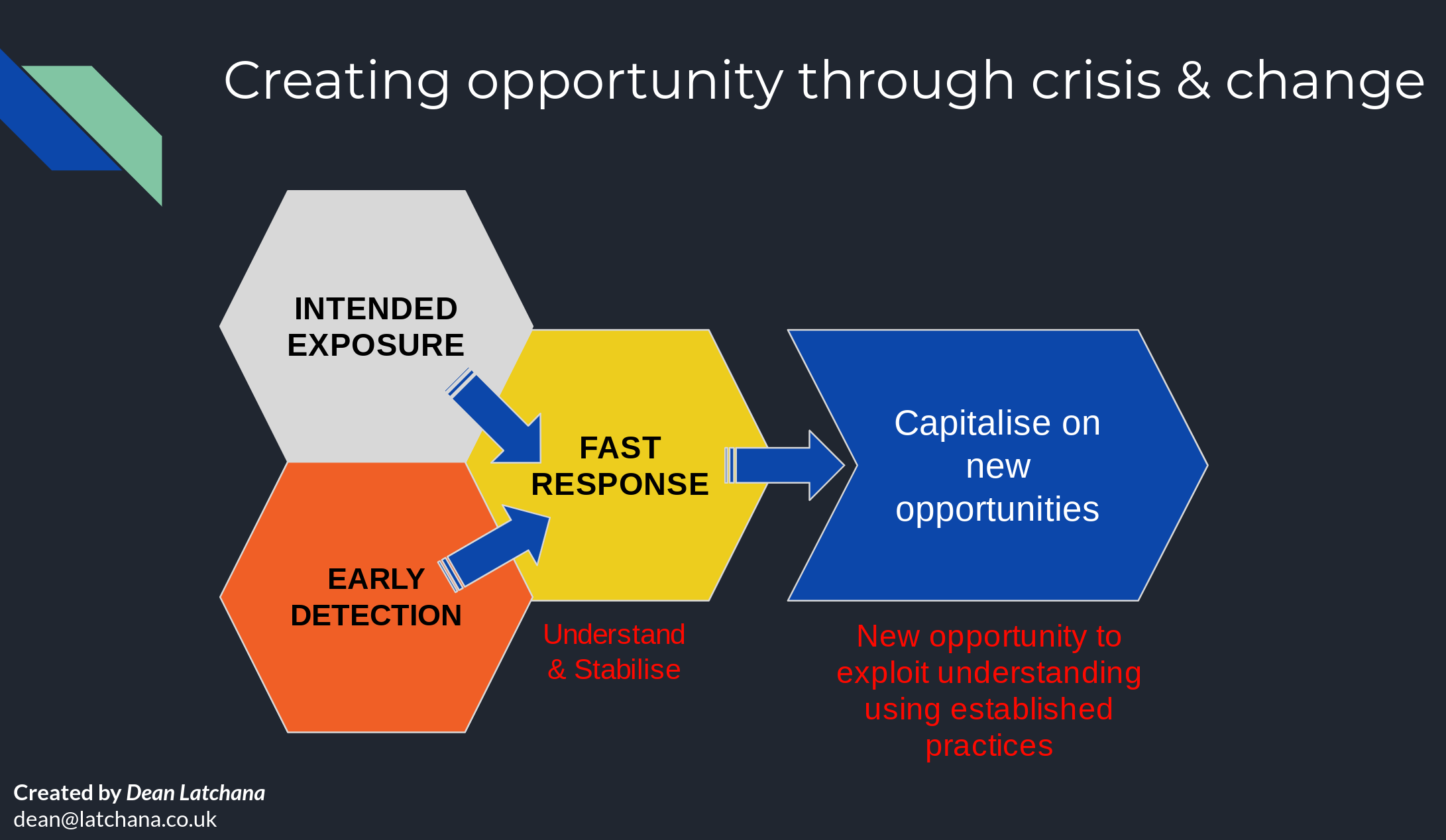Business Agility is an enterprise-wide mechanism to rapidly sense, respond and deliver the right business initiatives that will benefit an organisation and its customers.
To increase business agility, an organisation needs to promote the qualities of collaboration, alignment and synchronisation amongst its teams and departments. This creates cohesion to the organisations strategic goals.
Governance processes should be built around these qualities since it affords individuals and teams a great degree of freedom to pursue the organisation’s goals and outcomes. It will also help close the gap between strategic direction and day-to-day team execution.
Consider scaling team frameworks such as Scrum to create ways of working that promote these qualities.
Collaboration
Regardless of background, seniority or specialism, teams and individuals from across the business should have the freedom to collaborate. Collaboration can extend beyond the business to include business partners and clients.
Managers should help the business to reorganise so that cross-functional teams of specialists, regardless of department, can work as single teams to rapidly experiment and deliver business outcomes.
Alignment
All individuals should understand and be aligned to the organisation’s mission, vision and strategic direction. Each team and department should have clarity of the business outcomes that are currently being sought.
Leaders should enthuse and align their colleagues; managers should create the environment and ways of working with their colleagues which reduces misalignment.
Synchronisation
Creating cross-functional and co-locate delivery teams can greatly improve business agility. However, despite this, often a single team cannot deliver products and services on their own. Often many teams need to be involved, which necessitates the synchronisation of effort across many teams.
To illustrate this Klaus Leopold gives a useful analogy which I’ve expressed as the following:
A customer wanting to have a letter written, where each team works independently by controlling a row of keys on a keyboard. Typing the letter would be uncoordinated, slow and frustrating.
To improve time to market, it’s inevitable that teams need to interact. So, rather than teams independently hitting their keys at speed, it’s better if each team slows down, coordinate and collectively hit the keys at the right time and sequence.




